[row]
[span12]
THE FOOTSTEPS OF MARCO POLO
“In the Footsteps of Marco Polo” has fast become an audience favorite, capturing the hearts and minds of people nationwide. Based on a true life story, this Emmy® Nominated PBS documentary and accompanying adventure book tell the incredible journey of New York buddies Denis Belliveau and Francis O’Donnell who spent two years retracing the entire route of 13th Century Venetian, Marco Polo, from Venice to China and back again.
Since the first airing of the film Denis has been invited into hundreds of schools across the country to share his adventures first hand. He currently performs a mix of assemblies, individual class(es) and Explorer-in-Residence (EIR) workshops whose ‘modules’ include but are not limited to Cartography, Culture and Religions, China, the Renaissance and the Age of Discovery, Documentation, Comparative Texts, Global Citizenship, “Mastery” as well as writing, filmmaking and photography. These dedicated units are the ultimate follow up to the assembly and Q+A and offer a rich treasure trove of critical thinking and project based-learning exercises that speak strongly to the STE(A)M skills that are such an essential part of our children’s future. Denis also offers evening performances for parents and adults which are followed by book signings.
Click here to read Marco Polo’s Guide to Afghanistan article posted by Smithsonian.com
[/span12]
[/row]
[row]
[span12]
EXPLORER IN RESIDENCE PROGRAM (EIR)
[/span12]
[/row]
[row]
[span12]
Our EIR programs are individually created just for you. Please contact us for your FREE consultation.
Our Explorer-in-Residence Program is a multiday or weeklong residency helmed by the explorer, which leads students and teachers through the content of numerous disciplines aligned with their expedition’s achievements and goals.
This critically acclaimed program, borne out of our flagship offering, In the Footsteps of Marco Polo, transports audiences on a remarkable journey through time, history and the rich tapestry of cultures along the fabled Silk Road.
The wide range of topics that Polo noted regarding the lands he journeyed through include regional histories, descriptions of cities, architecture, ethnicities and governments as well marriage customs, rituals, diets, arts and religions.
Such a diverse and detailed account earned him the renowned title of “Father of modern anthropology,” and offers unlimited potential for discovery and growth in the humanities and STEAM skills through Inspired Project-Based Learning.
[/span12]
[/row]
[row]
[span12]
[/span12]
[/row]
[row]
[span12]
THE PROGRAM
[/span12]
[/row]
[row]
[span12]
Please click a title below to view more information. You can also view the EIR Modules in PDF format
***Certain projects require multiple days to execute and may benefit from preparation and / or research completed in advance of the Explorer’s visit.***
[accordions style=”border:none;”]
[accordion title=”Yurt Tent”]
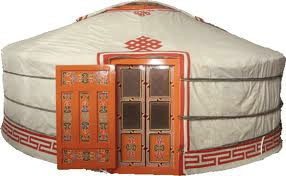 Students build scale models of a nomadic Mongol Ger or Yurt tent. Still used today on the steppes of Central Asia, the Ger is a tangible link to the historic past. Students who have studied the nomadic life of Native Americans find the comparisons with those of Mongolia stimulating and for good reason; A discussion on the Bering Land Bridge and how the Americas were populated by East Asians.
Students build scale models of a nomadic Mongol Ger or Yurt tent. Still used today on the steppes of Central Asia, the Ger is a tangible link to the historic past. Students who have studied the nomadic life of Native Americans find the comparisons with those of Mongolia stimulating and for good reason; A discussion on the Bering Land Bridge and how the Americas were populated by East Asians.
*National Standards Alignments
[/accordion]
[accordion title=”Create a Golden Tablet”]
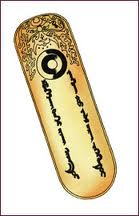 Marco Polo was given a golden paiza or “passport” entitling him to shelter, food, fresh horses and guides wherever he traveled in the Mongol Empire. Students make their own paiza using gold polymer clay that when baked becomes hard and metallic. Discussions will include diplomacy, the significance of passports and other official documents and how one such hand written, ‘golden tablet’ saved Denis’ life on numerous occasions.
Marco Polo was given a golden paiza or “passport” entitling him to shelter, food, fresh horses and guides wherever he traveled in the Mongol Empire. Students make their own paiza using gold polymer clay that when baked becomes hard and metallic. Discussions will include diplomacy, the significance of passports and other official documents and how one such hand written, ‘golden tablet’ saved Denis’ life on numerous occasions.
*National Standards Alignments
[/accordion]
[accordion title=”Build a Trebuchet”]
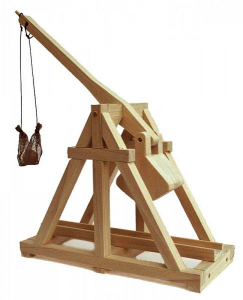 Students build a working model of a medieval trebuchet or catapult described by Marco Polo, ranging in size and strength – anywhere from a tiny model made out of Popsicle sticks to desktop sizes that can fire tennis balls and even larger versions, which can hurl pumpkins!
Students build a working model of a medieval trebuchet or catapult described by Marco Polo, ranging in size and strength – anywhere from a tiny model made out of Popsicle sticks to desktop sizes that can fire tennis balls and even larger versions, which can hurl pumpkins!
*National Standards Alignments
[/accordion]
[accordion title=”Indigo Dye”]
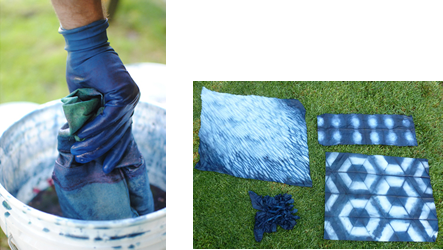
Equal parts art project, science experiment and geometry lesson, patterns are created by folding, wrapping, and twisting cloth before dipping into a class made indigo dye bath.
“They have also abundance of very fine indigo. This is made of a certain herb, which is gathered, and [after the roots have been removed] is put into great vessels upon which they pour water and then leave it till the whole of the plant is decomposed.” -Marco Polo
*National Standards Alignments
[/accordion]
[accordion title=”Cartography: The Silk Road”]
 Maps from Marco Polo’s time were hand drawn and elaborately illustrated. Students make their own ancient Silk Road versions to scale, on vellum or paper. Legends and keys can explore the movement of goods and ideas as well as population and religious makeup along the famed trade route, offering a look at cultural diffusion as well as contemporary empirical borders.
Maps from Marco Polo’s time were hand drawn and elaborately illustrated. Students make their own ancient Silk Road versions to scale, on vellum or paper. Legends and keys can explore the movement of goods and ideas as well as population and religious makeup along the famed trade route, offering a look at cultural diffusion as well as contemporary empirical borders.
(Map shown hand drawn by Denis)
Please ask us about the integration of new technologies into this module.
*National Standards Alignments
[/accordion]
[accordion title=”Culture and Religions: Guided ‘Footsteps’ Museum Tour” ]
In his travels, Polo would interact with Eastern Orthodox and Nestorian Christians, Sunni, Shia and Ismaili Muslims, Zoroastrians, Buddhists, Chinese and Indian Jews, Taoists, Hindus and Animists. But he would have also seen the shattered remains of those peoples cultural past including Roman, Greek, Hittite, Achaemenid and Parthian ruins.
A guided “Footsteps” museum tour will reveal the diversity of cultures along Polo’s route and uncover glorious remnants of ancient dynasties that littered his path across the Eurasian landmass and back. Students will discover how environments shaped these various belief systems and see that reflected in the art produced by those cultures. They will also learn how these older cultures and religions influenced the societies that eventually replaced them.
(When a museum visit is not practical, this module can be presented virtually on a Smart Board.)
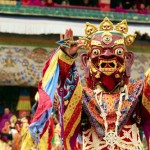
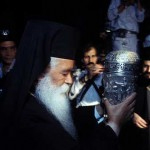

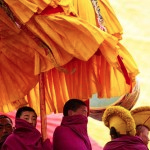
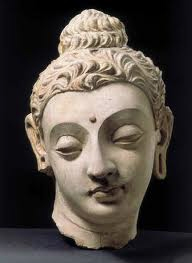
*National Standards Alignments
[/accordion]
[accordion title=”China”]
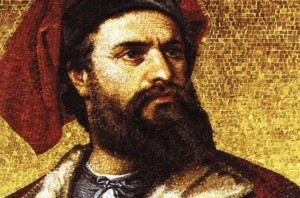
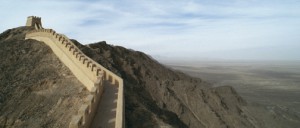
YUAN DYNASTY – China during Polo’s period
Who are Marco Polo’s contemporary travelers and historians and just what was their mission’s to the courts of the Great Khans? How do their works confirm his accounts or differ from his descriptions? This module is best presented in conjunction with, “The Mongols,” below.
*National Standards Alignments
[/accordion]
[accordion title=”The Mongols”]
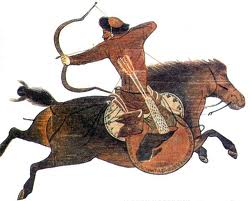 It was said you could smell them coming from miles away before they were upon you. Tens of thousands of horsemen riding like the wind and devastating everything in their path. The marauding hordes would eventually reach as far as Eastern Europe before being turned back in perhaps history’s luckiest twist of fate. How had the Mongols been able to conquer and then rule such vast territories? How did these various kingdoms and empires interact? Where did they fail? These questions and more will be answered as we take a look at the largest empire the world has ever known.
It was said you could smell them coming from miles away before they were upon you. Tens of thousands of horsemen riding like the wind and devastating everything in their path. The marauding hordes would eventually reach as far as Eastern Europe before being turned back in perhaps history’s luckiest twist of fate. How had the Mongols been able to conquer and then rule such vast territories? How did these various kingdoms and empires interact? Where did they fail? These questions and more will be answered as we take a look at the largest empire the world has ever known.
*National Standards Alignments
[/accordion]
[accordion title=”Documentation”]
 Marco Polo’s fame rests in the details with which he records the journey for future generations. But Europeans were by no means the only ones documenting their travels. Chinese traveler Xuanzang, credited for bringing Buddhism to China became famous for his seventeen-year overland journey to India, which is recorded in detail in the classic Chinese text Great Tang Records on the Western Regions. Arab explorer Ibn Battuta’s rihla (travel journal) which was traditionally about a hajj or pilgrimage to Mecca, was much more wide-ranging and interesting. Students will participate in a discussion of why these writers’ accounts stand out above the rest of their contemporaries, where and for what reasons Marco Polo’s account falls flat for modern readers and what makes good travel writers and journalists today.
Marco Polo’s fame rests in the details with which he records the journey for future generations. But Europeans were by no means the only ones documenting their travels. Chinese traveler Xuanzang, credited for bringing Buddhism to China became famous for his seventeen-year overland journey to India, which is recorded in detail in the classic Chinese text Great Tang Records on the Western Regions. Arab explorer Ibn Battuta’s rihla (travel journal) which was traditionally about a hajj or pilgrimage to Mecca, was much more wide-ranging and interesting. Students will participate in a discussion of why these writers’ accounts stand out above the rest of their contemporaries, where and for what reasons Marco Polo’s account falls flat for modern readers and what makes good travel writers and journalists today.
This module will prepare students for documenting the ‘Silk Road Tasting Tour’ in their own ‘rihla’ and subsequently the comparative texts exercise by looking at the art of storytelling, creative writing and production techniques.
*National Standards Alignments
[/accordion]
[accordion title=”Silk Road Artifacts”]
Silk Road artifacts collected by Denis during his travels are presented in class and passed around, including an Afghan quirt or riding crop given to him by the Shah of the Wakhan Corridor, its well-worn handle made of Marco Polo sheep bone. He will present antique colorful gowns from Central Asia and China and actual silkworm cocoons, whose precious material students can pull and hand spin into one continuous strand, as was done in the days of old.
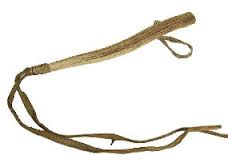

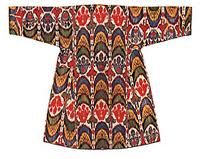
*National Standards Alignments
[/accordion]
[accordion title=”How did Marco Polo change the world?”]
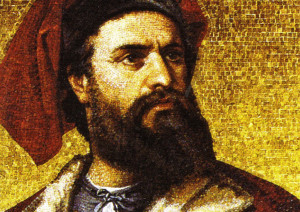 Students spend the week focused on the essential question “How did Marco Polo change the world?” Students learn about the period, research local community connections, and design an exhibit featuring artifacts, primary source materials, maps and charts. The exhibit is mounted in the lobby outside the auditorium and students serve as docents to the general public the evening Denis gives his presentation for the greater community.
Students spend the week focused on the essential question “How did Marco Polo change the world?” Students learn about the period, research local community connections, and design an exhibit featuring artifacts, primary source materials, maps and charts. The exhibit is mounted in the lobby outside the auditorium and students serve as docents to the general public the evening Denis gives his presentation for the greater community.
*National Standards Alignments
[/accordion]
[accordion title=”Make a Movie”]
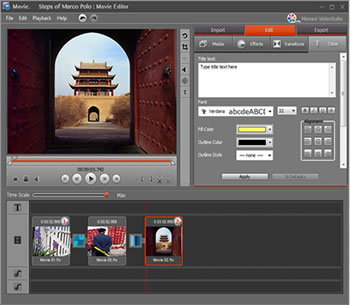 Using actual clips from the Marco Polo journey, students create their own mini doc’s which they research, write and narrate themselves.
Using actual clips from the Marco Polo journey, students create their own mini doc’s which they research, write and narrate themselves.
The clips have been carefully grouped to reflect the art, culture and natural beauty of the various countries on the route and so lend themselves to stories with a historical bent, but work just as well for storylines that reflect the modern politics, economics and state of affairs of those given places.
If your school doesn’t have a film/video department we offer P.D. sessions with an award winning T.V. producer/filmmaker who will join the “Explorer-in-Residence” program to work hands on with students.
*National Standards Alignments
[/accordion]
[accordion title=”The Renaissance and the Age of Discovery”]
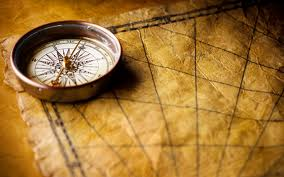 Polo’s book fired the imagination of future explorers to reach the riches of the East, among them
Polo’s book fired the imagination of future explorers to reach the riches of the East, among them
Christopher Columbus, whose well-worn and annotated copy of the ‘Travels of Marco Polo’ was a constant companion during his trans-Atlantic voyage. Not only was Polo a trailblazer of the Silk Road, he pioneered uncharted territory on another famous avenue of trade, the Spice Route—giving the West its first account as to the origin of these most precious of commodities, – spices, which to Marco’s contemporaries and those that followed during The Age Of Discovery, also meant herbal medicine, incenses, perfumes, as well as seasonings -all worth their weight in gold. This module is a natural lead in for the tasting tour that follows.
*National Standards Alignments
[/accordion]
[accordion title=”Silk Road Subway Tour: A Taste For Geography”]
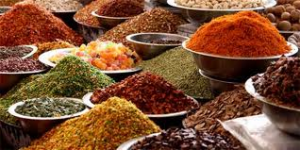 Follow the route of Marco Polo on a subway tasting tour of ethnic neighborhoods and restaurants dispersed along the number 7 line in Queens, N.Y. Considered the most culturally diverse place on earth. Time permitting and between bites, we visit Hindu and Buddhist temples, a Catholic Church, Mosque or Synagogue.
Follow the route of Marco Polo on a subway tasting tour of ethnic neighborhoods and restaurants dispersed along the number 7 line in Queens, N.Y. Considered the most culturally diverse place on earth. Time permitting and between bites, we visit Hindu and Buddhist temples, a Catholic Church, Mosque or Synagogue.
Starting in Long Island City for Italian, we then move on a few stops for Middle Eastern in Sunnyside, then Indian and Tibetan in Jackson Heights and finally ending for Dim Sum in the vibrant Chinese community of Flushing. The students savor firsthand how the geography of that Silk Road country is reflected in its cuisine and uncover the bonds between food and culture. The history and origins of the dishes will covered along with Polo anecdotes about food and some of Denis’ own culinary experiences on the road.
(If not in the Greater New York Area, please ask how this tour can be modified for your region.)
Check out Denis speaking about the Silk Road Subway Tour on Fox 5 NY.
*National Standards Alignments
[/accordion]
[accordion title=”Comparative Texts & Source Materials”]
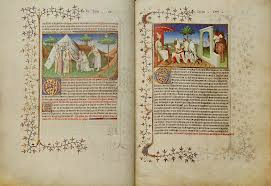 For centuries, Marco Polo’s book remained the only source of information for Europeans about the geography of the Orient and the mysteries of the Far East. Alternatively titled “A Description Of The World and The Travels of Marco Polo” his book became the first international bestseller, being hand copied by scribes throughout Europe. There are over one hundred of these ancient texts still surviving that vary in content, requiring scholars to compare manuscripts looking for additions and omissions.
For centuries, Marco Polo’s book remained the only source of information for Europeans about the geography of the Orient and the mysteries of the Far East. Alternatively titled “A Description Of The World and The Travels of Marco Polo” his book became the first international bestseller, being hand copied by scribes throughout Europe. There are over one hundred of these ancient texts still surviving that vary in content, requiring scholars to compare manuscripts looking for additions and omissions.
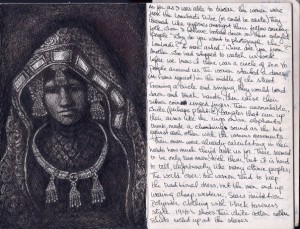 Students will be introduced to a white glove experience handling a rare, fully detailed facsimile of one of Polo’s most famous illuminated books, (seen above) housed in the National Library in Paris (C.1400) along with original printed leafs of Polo’s accounts from Sebastian Munster’s Cosmographia. (C.1540) Complimenting these are marvelous 17th and 18th century prints of flora and fauna, which Polo was the first to describe. Denis’ also brings some of his own hand written journals and drawings from the journey (pictured on right).
Students will be introduced to a white glove experience handling a rare, fully detailed facsimile of one of Polo’s most famous illuminated books, (seen above) housed in the National Library in Paris (C.1400) along with original printed leafs of Polo’s accounts from Sebastian Munster’s Cosmographia. (C.1540) Complimenting these are marvelous 17th and 18th century prints of flora and fauna, which Polo was the first to describe. Denis’ also brings some of his own hand written journals and drawings from the journey (pictured on right).
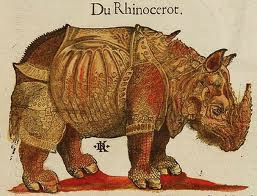 A conversation on the importance of source materials, including research techniques and accessing original manuscripts will take place after class rihla’s are presented and discussed.
A conversation on the importance of source materials, including research techniques and accessing original manuscripts will take place after class rihla’s are presented and discussed.
*National Standards Alignments
[/accordion]
[accordion title=”Filmmaking & Photography”]
 A crash course in the guerilla techniques Denis has learned during a career as an editorial travel photographer and documentary filmmaker. Students will be assigned a personal 2-3 minute short film or photo essay piece entitled, “In the Footsteps of ………”
A crash course in the guerilla techniques Denis has learned during a career as an editorial travel photographer and documentary filmmaker. Students will be assigned a personal 2-3 minute short film or photo essay piece entitled, “In the Footsteps of ………”
(Screenings to follow.)
*National Standards Alignments
[/accordion]
[accordion title=”Global Studies – Marco’s World Today”]
 Using his golden passport, Marco Polo traveled across basically one giant country, the Mongol Empire. Denis needed to cross 24 modern, geopolitical borders. This module will look at some those countries today, their political and economic makeup, as well as the driving forces behind their integration or isolation in world markets and politics. Of special interest to many students are Denis’ experiences in Afghanistan, the Central Asian Republics of Turkmenistan & Uzbekistan and the Islamic Republic of Iran.
Using his golden passport, Marco Polo traveled across basically one giant country, the Mongol Empire. Denis needed to cross 24 modern, geopolitical borders. This module will look at some those countries today, their political and economic makeup, as well as the driving forces behind their integration or isolation in world markets and politics. Of special interest to many students are Denis’ experiences in Afghanistan, the Central Asian Republics of Turkmenistan & Uzbekistan and the Islamic Republic of Iran.
*National Standards Alignments
[/accordion]
[accordion title=”The Crusades”]
 Born in Venice in 1254, Marco would have had a ringside seat to the last Crusade. As the leading trade city and sea power on the Adriatic and Mediterranean, Venice had profited greatly from shipbuilding and other contracts with the warrior knights. Years later, when he returned home in 1295, the last Christian stronghold in the Levant, St. John of Acre, a fortress he knew well, had only just fallen back into Muslim hands four years earlier.
Born in Venice in 1254, Marco would have had a ringside seat to the last Crusade. As the leading trade city and sea power on the Adriatic and Mediterranean, Venice had profited greatly from shipbuilding and other contracts with the warrior knights. Years later, when he returned home in 1295, the last Christian stronghold in the Levant, St. John of Acre, a fortress he knew well, had only just fallen back into Muslim hands four years earlier.
Denis presents a brief, synoptic history on these misguided holy wars and the major impact they had on the world Marco Polo traveled in.
*National Standards Alignments
[/accordion]
[accordion title=”Dilemmas”]
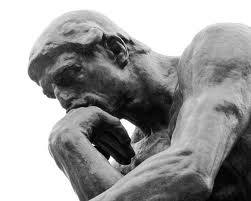 Dilemmas are a critical thinking exercise where students are presented with some of the issues Denis faced during his two- year journey. They may work on these individually or in groups..
Dilemmas are a critical thinking exercise where students are presented with some of the issues Denis faced during his two- year journey. They may work on these individually or in groups..
- You have vowed to retrace Marco Polo’s entire twenty-five thousand mile journey overland without flying. You are now the guests of an Afghan Warlord who has just offered you a helicopter in order to fly over the most dangerous battlegrounds on your route. Do you take this one small flight for personal safety and never admit it to anyone yet know deep in your heart you failed at your mission? Or do you take his counter offer and cross the war zone with 25 heavily armed warriors expecting to see action?
- You’ve been staying with a poor yet hospitable Mongolian family who insist on slaughtering a sheep to honor you at a feast. Instead of offering you lamb chops which they hang up to dry for later consumption, they offer you what to them, as nomads, is considered the choicest pieces because they are the highest in protein: the heart, lungs, liver, eyes and brain. If you refuse to eat, you will greatly insult them. What do you do?
- You’ve come to a very remote island and are staying with locals in their jungle hut. Their child has severe conjunctivitis or pink eye and you have just enough
medicine in your first aid kit to treat it but are concerned that others might be carrying it and have passed it on to you. It takes 10 days to walk out of the thick jungle if you’re not half blind and another 4 or 5 of rough traveling until a town and doctor. Do you save the medicine in case you need it or offer it for the child?
*National Standards Alignments
[/accordion]
[accordion title=”In the Footsteps of Alexander The Great – Marco and The Macedonian”]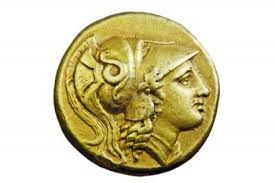 “Whether it was contemplating a colossal Buddha statue he had once stood before or crossing a forbidding desert he’d so accurately described, the most powerful moments from my travels are the ones when it felt like Marco Polo was truly with me. I would read passages from his book and the distant, centuries old words became present, in the- moment realities.” – Denis Belliveau
“Whether it was contemplating a colossal Buddha statue he had once stood before or crossing a forbidding desert he’d so accurately described, the most powerful moments from my travels are the ones when it felt like Marco Polo was truly with me. I would read passages from his book and the distant, centuries old words became present, in the- moment realities.” – Denis Belliveau
Marco himself would have had a similar experience when he rode into the legendary cities and towns he had read of during his boyhood studies of his hero, Alexander the Great. He mentions the Macedonian four times in his book. This module takes a look at the map and these passages, rife with hero myth and legend as students discuss how Polo himself must have felt, walking in the footsteps of history.
*National Standards Alignments
[/accordion]
[accordion title=”Animals He Saw… Or Perhaps Not”]
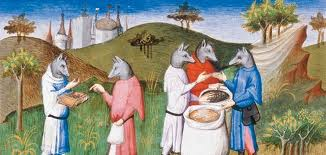 Polo was an early naturalist putting to pen bears, boars, crocodiles, camels, elephants, horses, leopards, tigers, Marco Polo Sheep (named for him), mountain goats, all manner of birds, Persian lions, porcupines, snow leopards and yaks. Students take a look at these passages and uncover many facts regarding these species.
Polo was an early naturalist putting to pen bears, boars, crocodiles, camels, elephants, horses, leopards, tigers, Marco Polo Sheep (named for him), mountain goats, all manner of birds, Persian lions, porcupines, snow leopards and yaks. Students take a look at these passages and uncover many facts regarding these species.
Mythic creatures including giant Roc birds that can lift elephants, a nation of dog headed men, islands of headless people whose faces reside in their chests and others where tiny ape like-men dwell in the forest are also included in Polo’s book. A detailed discussion will investigate why these fantasies are included and why, even today, people still believe in mythical creatures like Bigfoot, Yeti’s, the Loch Ness Monster and
Chupacabras.
*National Standards Alignments
[/accordion]
[accordion title=”Islamic Geometric Patterns”]
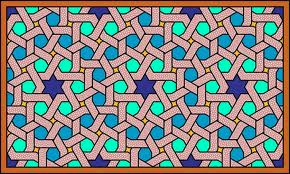 The most recognizable visual expression of Islamic art and architecture are dazzling geometric patterns that are magnificent in their beauty and awe-inspiring in their execution.
The most recognizable visual expression of Islamic art and architecture are dazzling geometric patterns that are magnificent in their beauty and awe-inspiring in their execution.
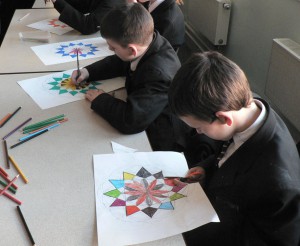
This workshop expands and enriches students’ appreciation of geometry in a cultural context through the study of this ancient Islamic practice. Students will have the opportunity to become familiar with the relationship between shapes and design by approaching an abstract subject in a concrete way. Using just a pencil, ruler, protractor and compass they will recreate classic examples taken from a particular historic building or artwork created during Marco Polo’s lifetime, while discussing how the religious restriction on figural imagery resulted in the emergence of this unique art form.
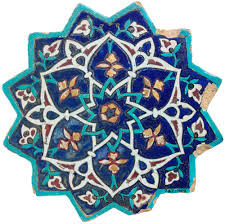 Activities based on geometric patterns support learning about shapes, space and measures. Younger students become adept at recognizing circles, triangles, squares and hexagons, and creating pictures using 2-D shapes. They learn to identify lines of symmetry and to recognize reflective and rotational symmetry. Older students can study transformational and symmetrical patterns to produce tessellations.
Activities based on geometric patterns support learning about shapes, space and measures. Younger students become adept at recognizing circles, triangles, squares and hexagons, and creating pictures using 2-D shapes. They learn to identify lines of symmetry and to recognize reflective and rotational symmetry. Older students can study transformational and symmetrical patterns to produce tessellations.
Younger grades can be provided with circular templates with the circumference divided into six or eight equal parts to help them start the exercise. Materials will be given to the teachers to continue working with these activities after Denis’ visits.
*National Standards Alignments
[/accordion]
[accordion title=”Ultramarine Pigment”]
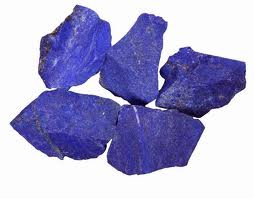 Lapis lazuli was worth its weight in gold in Marco Polo’s day as there was no other mineral known to produce the rich ultramarine blue pigment that European artists craved for their frescoes and alter pieces decorating the continents Gothic cathedrals. It was so rare and valuable that it was reserved mainly for painting the majestic robes of the Virgin Mary or the infant Jesus.
Lapis lazuli was worth its weight in gold in Marco Polo’s day as there was no other mineral known to produce the rich ultramarine blue pigment that European artists craved for their frescoes and alter pieces decorating the continents Gothic cathedrals. It was so rare and valuable that it was reserved mainly for painting the majestic robes of the Virgin Mary or the infant Jesus.
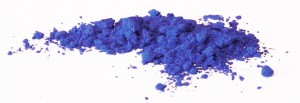 Polo correctly places the source for the highest grade of this semi precious stone in the mountains of Badakhshan, Afghanistan, which is where the stones that have been crushed and refined for the class come from. This still rare and costly pigment is then mixed with egg to recreate the tempera paint of the old masters and will be used sparingly by students when adding a luminescent touch of the kingly color to their Islamic geometric patterns.
Polo correctly places the source for the highest grade of this semi precious stone in the mountains of Badakhshan, Afghanistan, which is where the stones that have been crushed and refined for the class come from. This still rare and costly pigment is then mixed with egg to recreate the tempera paint of the old masters and will be used sparingly by students when adding a luminescent touch of the kingly color to their Islamic geometric patterns.
*National Standards Alignments
[/accordion]
[accordion title=”Book Covers”]
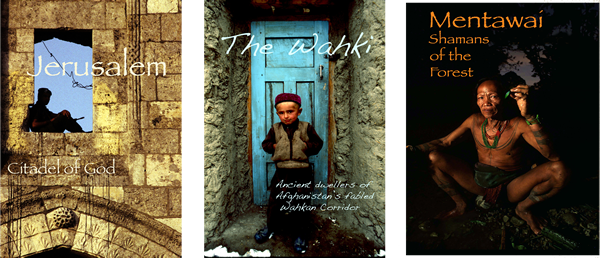
Choosing from dozens of Denis’ photos that have been titled and sub-titled to resemble book covers, students do research on and then write 10 pages or so about the people, places and things depicted on the covers. They could be fictional short stories or non-fiction historical reports, the only rule being that the cover (which they download and print) must go with what they’ve written.
*National Standards Alignments
[/accordion]
[accordion title=”Making Paper”]
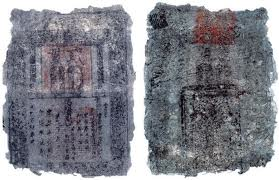 Legend has it that the secret of papermaking was obtained from two Chinese prisoners from the Battle of Talas, which led to the first paper mill in the Islamic world being founded in the Silk Road city of Samarkand. Papermaking was then diffused across the Islamic world where it traveled further west into Europe through Spain.
Legend has it that the secret of papermaking was obtained from two Chinese prisoners from the Battle of Talas, which led to the first paper mill in the Islamic world being founded in the Silk Road city of Samarkand. Papermaking was then diffused across the Islamic world where it traveled further west into Europe through Spain.
Paper is recorded as being manufactured in Italy in 1276, so when Marco Polo writes of the Chinese use of paper money his readers knew exactly the material he was talking about but couldn’t conceive that it could represent value as a currency. Students make their own paper as we discuss its history to China, the Silk Road and Marco Polo.
*National Standards Alignments
[/accordion]
[accordion title=”Samarkand & Bukhara – Jewels of the Silk Road”]
Samarkand and Bukhara, in modern day Uzbekistan, have stirred the imaginations of Silk Road travelers and explorers for centuries. Important to Marco Polo’s story, many of our modules come together here.
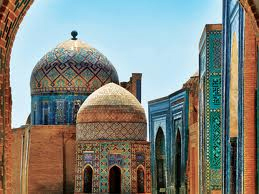
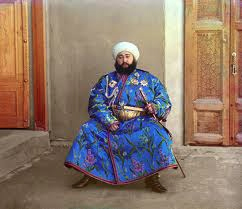
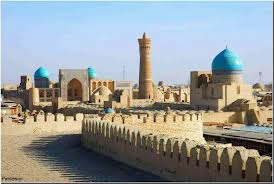
The Mongol’s devastated both cities but it was said that the towering Kaylan Minaret in Bukhara was spared because Genghis Khan himself thought it too beautiful to destroy.
The Islamic influences were revived, recreated, and restored under the reign of Genghis’ direct descendent, Timur, or as he’s known in the West, Tamerlane (1336- 1405) It is believed that the melon-shaped domes of the tomb chambers are imitations of the yurt or ger tents of the nomadic Mongols.
The color of the buildings also have significant meaning, as noted, blue was the color of kings but also the color of mourning in Central Asia at the time, as it is in many cultures even today. In addition to representing water, a rare resource around the Middle East and Central Asia, blue also warded off “the evil eye” and the notion is evident in the number of doors in and around the two cities that are still painted the
color to this day.
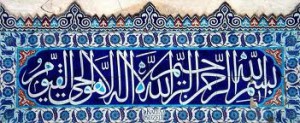
The very layout of all the tombs and mosques follow the Islamic passion for geometry, as does the tile work, which is famous for flowing images of Arabic calligraphy, beautifully arranged throughout the buildings. Words like the 99 names for “Allah” and whole passages of the Koran compliment the geometric patterns, creating a sense of atheistic harmony and peace.
Samarkand and Bukhara are jewels of the Silk Road. Throughout history, their stunning monuments have witnessed many turbulent times and events, but perhaps none are more intriguing than the one called, The Great Game.
*National Standards Alignments
[/accordion]
[accordion title=”The Great Game”]
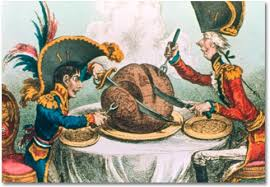 The Great Game is the term for the strategic rivalry and conflict between the British Empire and Russian Empire for supremacy in Central Asia in the 19th Century. It was the precursor for the Cold War and determined much of what modern Asia looks like on a map today.
The Great Game is the term for the strategic rivalry and conflict between the British Empire and Russian Empire for supremacy in Central Asia in the 19th Century. It was the precursor for the Cold War and determined much of what modern Asia looks like on a map today.
In his own lifetime, Marco Polo wasn’t believed. His exotic tales, such as the Chinese invention of paper money and black rocks that burned like fuel, (coal) were looked upon as fantasies. Today, ironically, his disbelievers claim he never reached China because of the things he didn’t mention, such as foot binding.
The truth of the matter is, never before nor since has one man contributed more to the knowledge of terrestrial as well as cultural geography.
Incredibly, his account of the environments and peoples of the Eurasian landmass stood as the Western World’s main source of knowledge regarding the Orient for hundreds of years. Indeed, parts of it weren’t validated until ‘The Great Game’ was being played out across Asia in the 19th century, when British explorers and spies disguised as Muslims and Buddhists followed dangerous sections of Polo’s Silk Road path and were amazed at how many details he got right. One even wrote that their trip threw, “a promise of light even on what seemed the wildest of Marco’s stories.”
We’ll take a look at some of those ‘stories’, as well as why the Silk Road had been closed to Europeans for so long. We’ll also discuss how, in many ways, The Great Game is still being played out in Central Asia today.
Suggested reading and viewing: The Great Game and European colonial attitudes of the era can best be discussed if prior to Denis’ arrival, students have had a chance to read the novel Kim, by Rudyard Kipling or have had a chance to watch the 1975 film, The Man Who Would Be King, which was adapted from a Kipling novella, written and directed by John Huston and stars Sean Connery and Michael Caine.
A definitive, non-fiction work on the subject is Peter Hopkirk’s, The Great Game.
*National Standards Alignments
[/accordion]
[accordion title=”ANTI SMOKING- TAKING RISKS”]
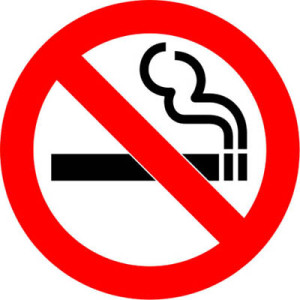 “I highly recommend that you never take up the ruinous habit of smoking on the very slim chance that one day you’ll be captured in a firefight in Afghanistan and it saves your life.” As an ex smoker Denis speaks from the heart when he explains to students that of all the risks and dangers he has faced in his life, none were more dangerous or stupid than smoking. The talk then turns to risk taking in general.
“I highly recommend that you never take up the ruinous habit of smoking on the very slim chance that one day you’ll be captured in a firefight in Afghanistan and it saves your life.” As an ex smoker Denis speaks from the heart when he explains to students that of all the risks and dangers he has faced in his life, none were more dangerous or stupid than smoking. The talk then turns to risk taking in general.
*National Standards Alignments
[/accordion]
[accordion title=”The 19TH Century In Exploration”]
This module will look at the 19th Century as an exciting time for exploration, when people took incredible risks trying to reach the last, wild, unknown regions of the globe. Some, hoping to gain the kind of glory, riches and fame we today can only compare to that of a rock star, others for more altruistic reasons, such as the advancement of knowledge in the sciences, culture and art.

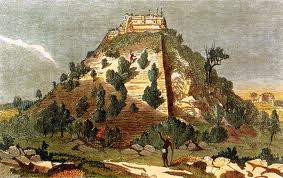
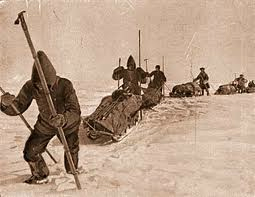
In the spirit of Marco Polo, Lewis and Clark kicked the century off by trekking to the Pacific and back from 1804 to 1806. The search for a Northwest Passage inspired polar explorers, such as the doomed British sailors of the Franklin Expedition and by the end of the century explorers and adventurers had finally mapped Africa’s interior.
It is not by accident that Denis has gravitated to this century because it ushered in the birth of photography and film. As a visual artist he has chosen many expeditions that can be presented which have rich source material to draw from; Daguerreotype’s and other early photographs, films, paintings and prints made by the explorers and expeditionary artists will be part of the fabric of the story he weaves in class.
Sometimes the artist’s themselves are the subject of discussion, as with one of the explorers who discovered Mayan ruins in the jungles of Central America in 1839, Frederick Catherwood. A painter unrivaled in his day for depicting the lost worlds he encountered, fine reproductions of Catherwood’s works will be presented alongside Denis’ own images taken some 150 years later on the exact same spot and from the same point of view.
Having seen first hand the injustice of the prevailing colonial views of the times, many 19th century explorers returned home to become champions of the people they lived amongst. They had experienced what one great mind of that century summed up as this,
“Travel is fatal to prejudice, bigotry, and narrow-mindedness, and many of our people need it sorely on these accounts. Broad, wholesome, charitable views of men and things cannot be acquired by vegetating in one little corner of the earth all one’s lifetime.”
Mark Twain
*National Standards Alignments
[/accordion]
[accordion title=”Archaeology”]
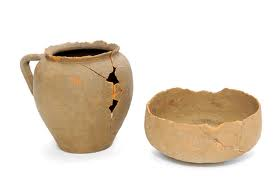 Denis has worked on many archeological digs photographing finds and the sites themselves as well as getting his hands dirty in the trenches. He’ll discuss those experiences, the importance of this science in decoding clues from the past and how a relatively recent excavation in India has contributed to validating the account made by Marco Polo of a certain Rudrama Devi, the Queen of Warangal.
Denis has worked on many archeological digs photographing finds and the sites themselves as well as getting his hands dirty in the trenches. He’ll discuss those experiences, the importance of this science in decoding clues from the past and how a relatively recent excavation in India has contributed to validating the account made by Marco Polo of a certain Rudrama Devi, the Queen of Warangal.
*National Standards Alignments
[/accordion]
[accordion title=”Architectural Monuments”]
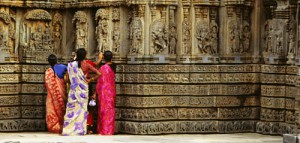 The twelfth and thirteen centuries saw an explosion of architectural creativity all over the world. In India there are carved stone monuments by the Chola and Hoysala Empires, and in Angkor Wat and Bagan (Southeast Asia) there are the largest temple complexes on the planet. In Turkey and Persia we have the striking mosques and minarets of the Seljuks and of course the great Christian Gothic cathedrals of Europe. In China, Polo describes the city of Hangzhou as “the city of heaven” with thousands of houses, bridges, public baths and streets paved in brick and stone.
The twelfth and thirteen centuries saw an explosion of architectural creativity all over the world. In India there are carved stone monuments by the Chola and Hoysala Empires, and in Angkor Wat and Bagan (Southeast Asia) there are the largest temple complexes on the planet. In Turkey and Persia we have the striking mosques and minarets of the Seljuks and of course the great Christian Gothic cathedrals of Europe. In China, Polo describes the city of Hangzhou as “the city of heaven” with thousands of houses, bridges, public baths and streets paved in brick and stone.
Why is this all happening during this time period? What is driving these monuments to be built? Who is paying for them? Where is the labor coming from? How does modern architecture compare? What drives the construction of the great works of today?
*National Standards Alignments
[/accordion]
[accordion title=”The Role of Women & Girls – Then and Now”]
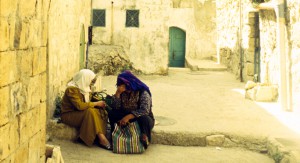 In many places Marco visited, women and girls had more rights in his day then they do now. In others, the reverse is true. We take a detailed look at specific passages from Polo’s book that illustrate both these points and continue the discussion on the future of women and girls in developing and developed
In many places Marco visited, women and girls had more rights in his day then they do now. In others, the reverse is true. We take a detailed look at specific passages from Polo’s book that illustrate both these points and continue the discussion on the future of women and girls in developing and developed
countries.
*National Standards Alignments
[/accordion]
[accordion title=”Rites of Passage – Coming of Age”]
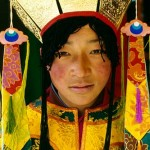 Coming of age is a young person’s transition from childhood to adulthood. The age at which this takes place varies in societies, as does the nature of the transition. It can be a simple legal convention or can be part of a ritual, as practiced by many cultures. In some, such a change is associated with puberty and early adolescence, ages 12-14, in others, commonly at ages 16-21. In either case, many cultures retain ceremonies to confirm the coming of age, and significant benefits come with the change or rite of passage.
Coming of age is a young person’s transition from childhood to adulthood. The age at which this takes place varies in societies, as does the nature of the transition. It can be a simple legal convention or can be part of a ritual, as practiced by many cultures. In some, such a change is associated with puberty and early adolescence, ages 12-14, in others, commonly at ages 16-21. In either case, many cultures retain ceremonies to confirm the coming of age, and significant benefits come with the change or rite of passage.
We will take a look at the various rites along Polo’s path and how Marco Polo himself was only 16 or 17 years old when left for China, making his adventure, in a real sense, one of the greatest coming of age stories ever told.
*National Standards Alignments
[/accordion]
[accordion title=”Music & Dance”]
During Explorer Week students will have the opportunity to perform a piece of music originating from the 13th century. They will work together under the guidance of the music or drama teacher to explore the Silk Road and its cultural legacy through music and dance. This will include investigating the musical cultures of Europe, Central Eurasia and the Middle East and culminate in a performance with singing, dance and percussion. The below links can be viewed for examples of Gregorian chant , Sufi -Whirling Dervishes, Throat Singing and Tibetan Cham Dance.
Click each heading to view the related video
DERVISHES
CHAM
Gregorian Chant
Throat singing
*National Standards Alignments
[/accordion]
[accordion title=”The Wakhan Corridor”]
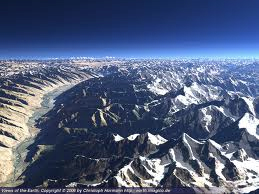 The Wakhan Corridor in far northeastern Afghanistan forms a land link or “corridor” that leads into China. Roughly 140 miles long and in some places only a few miles wide, it naturally divides the Pamir Mountains to the north and the Hindu Kush Range to the south. During the Great Game, Britain and Russia agreed that the narrow strip would be the buffer between the two Empires and to this day, it can only be traversed on foot or by horse or camel caravan. “What are the most magical places on Marco Polo’s path?” students often ask. This module and the next will answer that question.
The Wakhan Corridor in far northeastern Afghanistan forms a land link or “corridor” that leads into China. Roughly 140 miles long and in some places only a few miles wide, it naturally divides the Pamir Mountains to the north and the Hindu Kush Range to the south. During the Great Game, Britain and Russia agreed that the narrow strip would be the buffer between the two Empires and to this day, it can only be traversed on foot or by horse or camel caravan. “What are the most magical places on Marco Polo’s path?” students often ask. This module and the next will answer that question.
*National Standards Alignments
[/accordion]
[accordion title=”Taklamakan – Land Of No Return”]
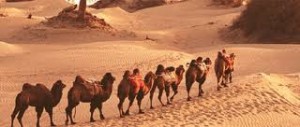 “When a man is riding through this desert at night, sometimes he hears spirit voices talking to him as if they were his companions, sometimes even calling him by name…these voices lure him away from the path so that he never finds it again.”
“When a man is riding through this desert at night, sometimes he hears spirit voices talking to him as if they were his companions, sometimes even calling him by name…these voices lure him away from the path so that he never finds it again.”
As was true for Marco as he crossed this desert, was true for Denis today. Only Polo didn’t know it was actually the sands’ silica or glass crystals, clashing together in high winds that created the eerie, otherworldly voices. Marco’s tale of spirits, calling one’s name, could be the origin of the “Marco…Polo” game kids play in a pool.
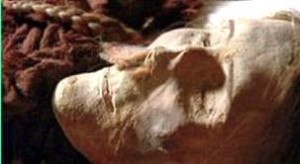 The local Uighurs still believe the desert is haunted. Perhaps they had seen the ghostly remains of the people who had settled here over 3000 years ago, Indo-Europeans, six feet tall with red and blonde hair and thousands of miles away from their homelands. Their bodies, naturally mummified in the arid sands, have rewritten the history of human migration and are a striking testament to the antiquity of the fabled Silk Road.
The local Uighurs still believe the desert is haunted. Perhaps they had seen the ghostly remains of the people who had settled here over 3000 years ago, Indo-Europeans, six feet tall with red and blonde hair and thousands of miles away from their homelands. Their bodies, naturally mummified in the arid sands, have rewritten the history of human migration and are a striking testament to the antiquity of the fabled Silk Road.
*National Standards Alignments
[/accordion]
[accordion title=”Marco Polo as the First Global Citizen”]
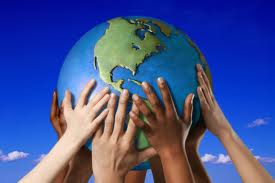 Polo’s relevance comes from the fact that unlike a lot of other famous seafarers and voyagers the purpose of his journey was not to colonize and subjugate people. In fact, he became a vehicle for Europe’s understanding of civilizations much older and more prosperous than theirs. Along the way, he wrote of the grandeur and benevolence of the Eastern kings and assimilated himself in the culture of the local people. And, most importantly, he considered it his duty to return to his birthplace and share his experience with others.
Polo’s relevance comes from the fact that unlike a lot of other famous seafarers and voyagers the purpose of his journey was not to colonize and subjugate people. In fact, he became a vehicle for Europe’s understanding of civilizations much older and more prosperous than theirs. Along the way, he wrote of the grandeur and benevolence of the Eastern kings and assimilated himself in the culture of the local people. And, most importantly, he considered it his duty to return to his birthplace and share his experience with others.
Marco Polo was truly one of world’s first global citizens. In an increasingly divided world, separated by boundaries, actual and presumed, his story forces us to look back and redefine globalization, to encompass not only trade and politics, but also human contact and cross cultural communication.
- What does it mean to be a global citizen?
- How does being a global citizen reflect the reality of your future?
- Why is it critical for you to hone advanced geopolitical skills and knowledge?
- Why does a solid understanding of world geography and how it shapes
international relations help you become a global citizen?
*National Standards Alignments
[/accordion]
[accordion title=”Mastery”]
Pursuing mastery requires a sacrifice.
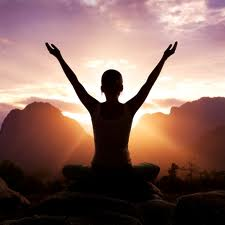 Mastery is not easy. It is not simple or quick or painless. Even so, as you earn your way through effort and dedication, mastery will more than pay you back in discovery, fulfillment, and growth.
Mastery is not easy. It is not simple or quick or painless. Even so, as you earn your way through effort and dedication, mastery will more than pay you back in discovery, fulfillment, and growth.
This final module is a candid discussion on what it takes to master your field, how to overcome obstacles that stand in your path and the commitment to succeed.
“We have not even to risk the adventure alone, for the heroes of all time have gone before us – the labyrinth is thoroughly known. We have only to follow the thread of the hero path. And where we had thought to find an abomination, we shall find a god; where we had thought to slay another, we shall slay ourselves; where we had thought to travel outward, we shall come to the center of our own existence. And where we had thought to be alone, we shall be with all the world.” – Joseph Campbell
*National Standards Alignments
[/accordion]
[/accordions]
[/span12]
[/row]
[row]
[span12]
[/span12]
[/row]
[row]
[span6]
INSPIRED PROJECT BASED LEARNING
The experience of thousands of teachers across all grade levels and subject areas, backed by research, confirms that Project Based Learning is an effective and enjoyable way to learn. The FHE takes this concept one step further. By utilizing real life explorers to helm our projects, we introduce the all-important element of inspiration – hence what we refer to as “Inspired Project Based Learning.”
[/span6]
[span1][/span1]
[span5]
INSPIRE in•spire verb /ɪnˈspajɚ/
verb.
to make (someone) want to do something : to give (someone) an idea about what to do or create
[/span5]
[/row]
[row]
[span12]
Unlike rote memorization and endless testing, IPBL involves active students, not passive; projects that engage hearts and minds, and provide real-world relevance for learning.
- After completing a project, students remember what they learn and retain it longer than is often the case with traditional instruction. Because of this, students who gain content knowledge with IPBL are better able to apply what they know and can do, to new situations.
- In the 21st century workplace, success requires more than basic knowledge and skills. In IPBL, students not only understand content more deeply but also learn how to take responsibility and build confidence, solve problems, work collaboratively, communicate ideas, and be creative innovators.
- The Common Core and other present-day standards emphasize real-world application of knowledge and skills, and the development of 21st century competencies such as critical thinking, communication in a variety of media, and collaboration. IPBL provides an effective way to address such standards.
- Modern technology – which students use so much in their lives – is a perfect fit with IPBL. With technology, teachers and students can connect with explorers, experts and audiences around the world, and use tech tools to find resources and information, create products, and collaborate more effectively.
- IPBL allows teachers to work more closely with active, engaged students doing high-quality, meaningful work, and in many cases rediscover the joy of learning alongside their students.
[/span12]
[/row]
[row]
[span12]
[/span12]
[/row]
[row]
[span12]
Click here to download a PDF copy of our brochure!
[/span12]
[/row]
[row]
[span12]
[/span12]
[/row]